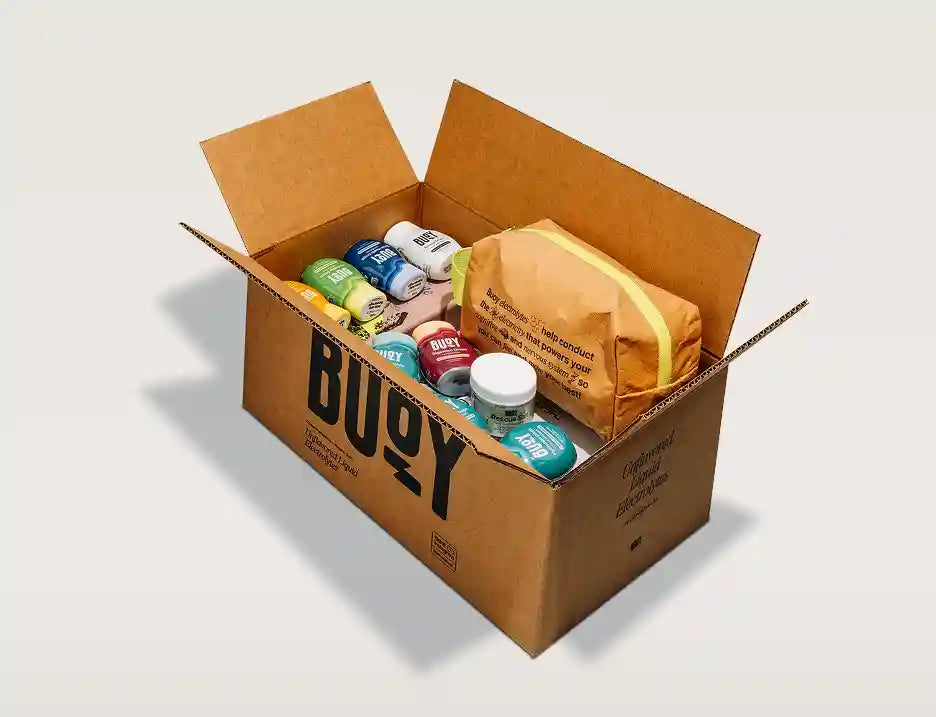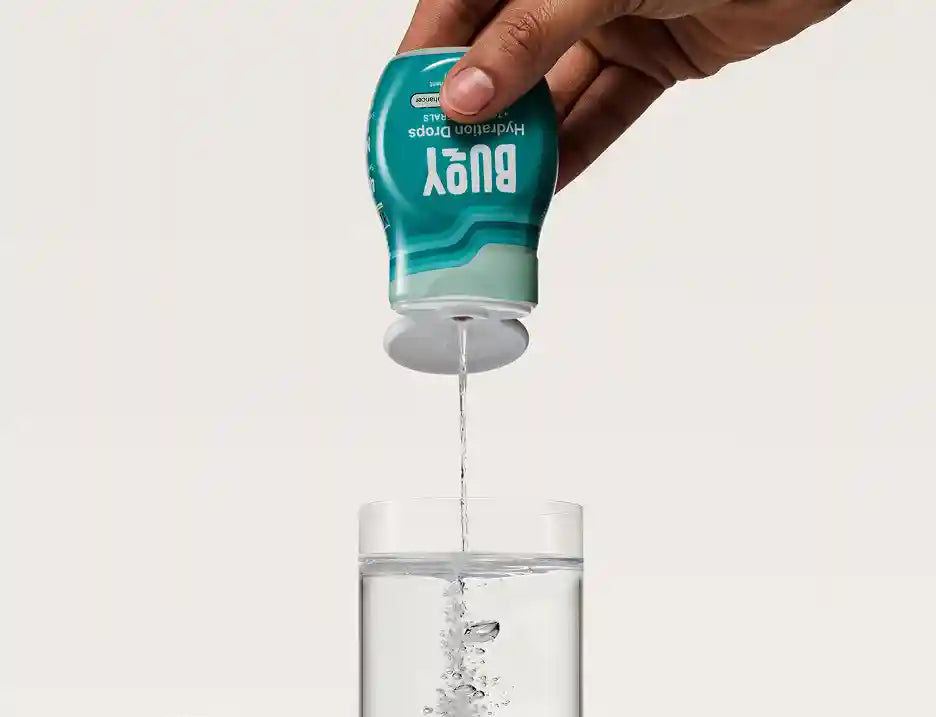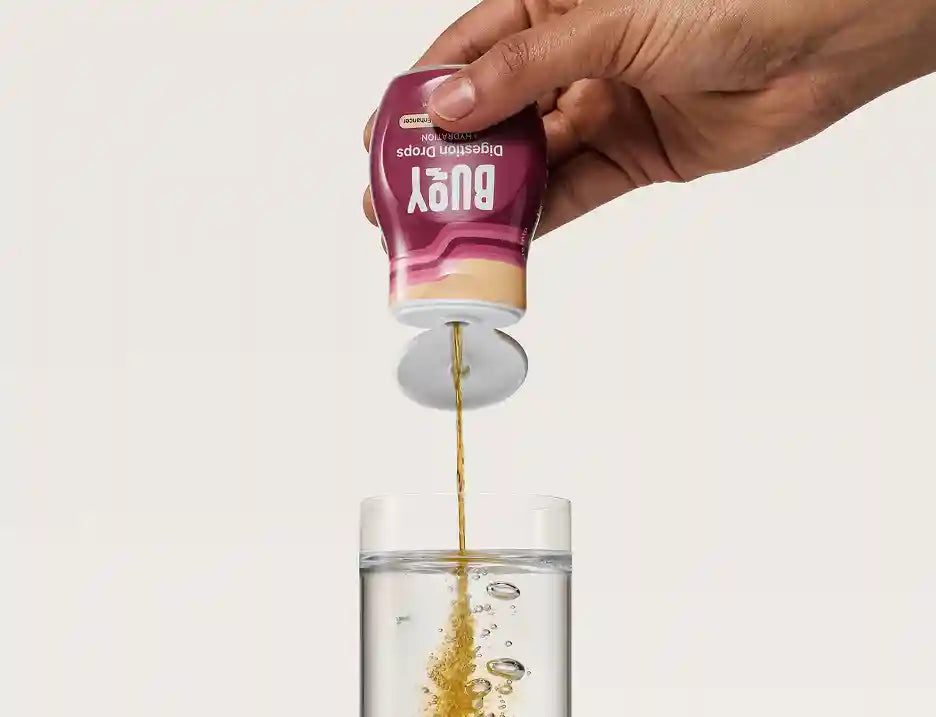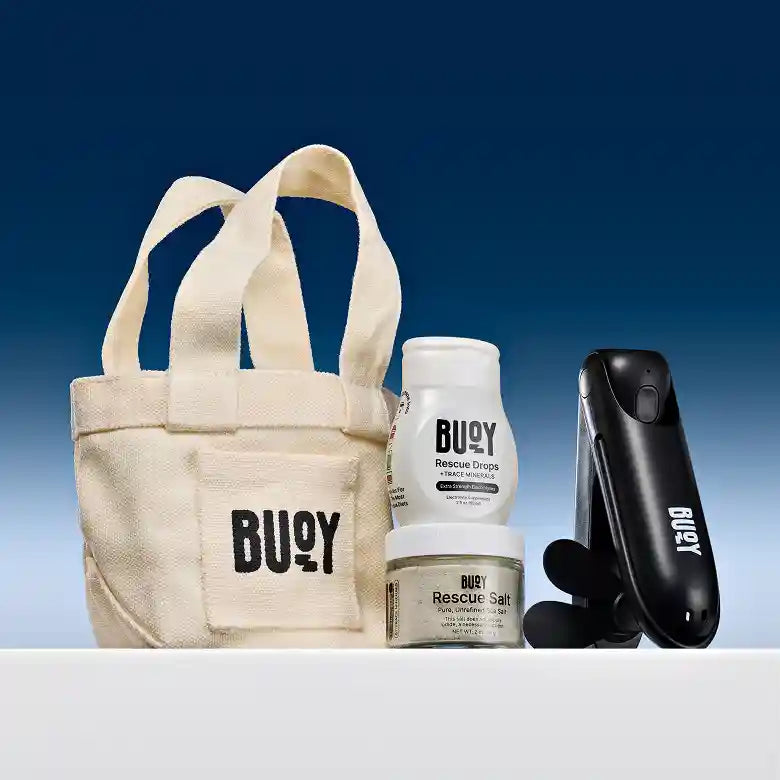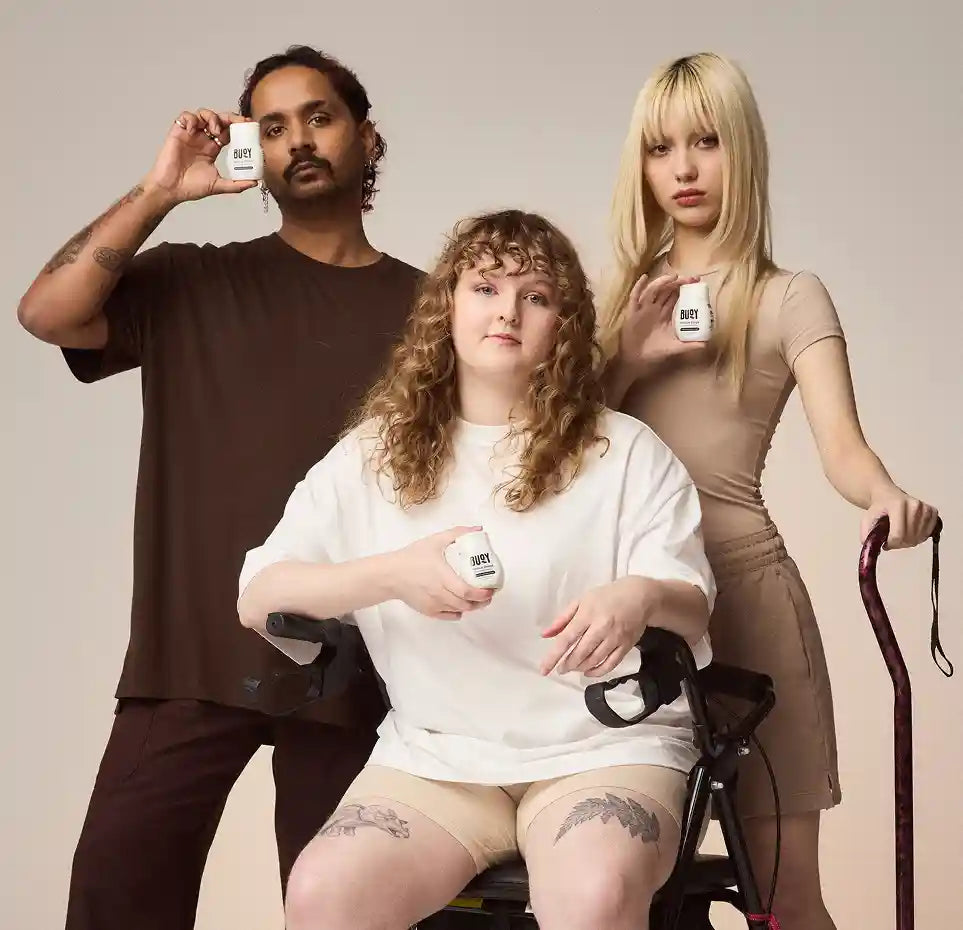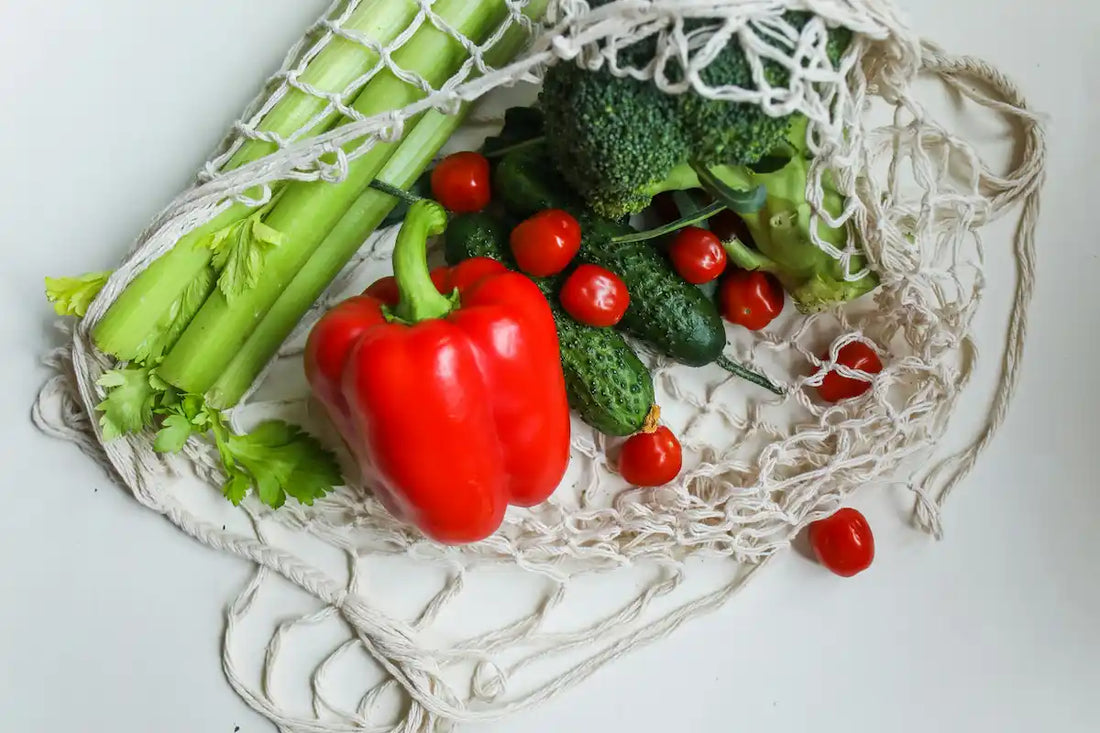
6 Electrolyte‑Rich Foods to Support Natural Hydration
Share
Hydration isn’t only about how much water you drink, it’s about how well your body uses that water. At Buoy, we know that electrolytes make that difference. These minerals help every cell absorb and move fluid efficiently.[1]
When your diet includes foods naturally rich in electrolytes, water works harder for you.[1][2]
Essential Takeaways
- Hydration depends on both water and electrolytes: sodium, potassium, magnesium, and calcium.[1][2][3][6]
- Everyday foods like greens, bananas, dairy, and nuts can replace lost minerals naturally.[2][3][4][6]
- Rescue Drops complement food-based electrolytes without sugar or additives.
- Balanced electrolytes support energy, focus, and fluid absorption.[1][3]
- Needs change with time of day, heat, and activity level.[1][7]
Here are six simple, tasty ways to stay hydrated from the inside out, especially when paired with Electrolyte Drops for clean, sugar-free mineral support.
- Leafy Greens (Spinach, Kale, Swiss Chard)
- Bananas and Other Potassium-Rich Fruits
- Yogurt, Milk & Fermented Dairy
- Nuts, Seeds & Legumes
- Potatoes & Sweet Potatoes
- Coconut Water & Hydrating Fluids with Electrolytes
- How to Use These Foods with Rescue Drops
- Why Electrolyte-Rich Foods Matter Beyond “Healthy Eating”
- Electrolyte Needs Shift Through the Day
- Combine Food and Liquid Support for Best Results
- FAQs on Electrolyte-Rich Foods
1. Leafy Greens (Spinach, Kale, Swiss Chard)
Leafy greens deliver magnesium, calcium, potassium, and water, the perfect combination for hydration. Adding a handful of spinach to smoothies, having kale in salads, or sautéing chard can carry you a long way toward electrolyte balance. Greens also bring fibre and antioxidants, which support gut health.[3][6]
Their fibre and antioxidant content also support gut health, which influences how well your body manages fluids.[1]
2. Bananas and Other Potassium-Rich Fruits
Bananas are famous for potassium, but avocados, oranges, melons, and apricots are strong contenders too. Potassium helps regulate fluid inside cells, muscle performance, and blood pressure.[2][4]
Start your day with fruit or add avocado to lunch, it’s an easy way to keep your electrolytes steady and your hydration consistent.[2][4]
3. Yogurt, Milk & Fermented Dairy
Dairy and fortified dairy alternatives supply calcium, magnesium, and a touch of sodium, all of which are vital for balanced hydration. Yogurt and kefir also provide beneficial bacteria that aid digestion and nutrient absorption.[5][6]
Prefer non-dairy? Fortified almond or soy milks help close the gap. Pairing them with Rescue Drops adds a clean hydration boost without added sugar.
4. Nuts, Seeds & Legumes
Almonds, pistachios, lentils, and beans are rich in magnesium and potassium. They also slow digestion, helping nutrients and water absorb more gradually.[3]
A handful of nuts or a bean-based salad keeps you energised while maintaining fluid balance through long days or warm weather.[3]
5. Potatoes & Sweet Potatoes
Root vegetables often get overlooked, but they’re high in potassium and provide additional minerals like magnesium and phosphorus. Boiled or baked with skin, they retain most of their mineral content. Sweet potatoes add complex carbs and beta-carotene, supporting sustained energy and hydration over time. They’re easy on digestion and naturally satisfying.[2][4]
6. Coconut Water & Hydrating Fluids with Electrolytes
Coconut water is a natural electrolyte beverage that contains potassium, sodium, and magnesium. Vegetable or bone broths can add sodium and trace minerals that water alone can’t. For extra balance during heat or exercise, pair these fluids with Rescue Drops to reinforce hydration without added sugar.[1][7][8]
How to Use These Foods with Rescue Drops
Integrating electrolyte-rich foods throughout your day builds hydration from the ground up:
- Start with a fruit-and-yogurt bowl at breakfast.
- Include leafy greens at lunch and a potato or bean dish at dinner.
- Snack on nuts or seeds instead of salty crisps.
- Mix Rescue Drops into water or smoothies to amplify mineral support.
That balance between food and clean electrolytes helps your body stay hydrated and resilient, no sugary sports drink required.[1][7]
Why Electrolyte-Rich Foods Matter Beyond “Healthy Eating”
Electrolyte-dense foods don’t just boost general health, they directly influence how your body retains and uses fluid. Without enough minerals, even a water-heavy diet can leave you feeling sluggish or thirsty. Combining whole foods with Rescue Drops turns daily hydration into something functional, not just habitual.[1][2][3]
Electrolyte Needs Shift Through the Day
Electrolyte balance changes with activity, temperature, and time of day:
- Morning: Rehydration replaces overnight fluid loss.
- Afternoon: Energy dips may signal falling electrolytes.
- Evening: Minerals support muscle relaxation and recovery.
Spread electrolyte-rich foods across meals, and top up with Rescue Drops when heat, travel, or workouts increase mineral loss.[1][7]
Combine Food and Liquid Support for Best Results
Whole foods provide a foundation, but high-loss situations, including exercise, illness, travel, or heat, often require extra help. That’s where Rescue Drops stand out, offering an unflavored, portable option without sugar or caffeine. When you combine steady food-based intake with clean liquid electrolytes, hydration becomes more efficient and easier to sustain long-term.[1][7]
FAQs on Electrolyte-Rich Foods
What foods are best for restoring electrolytes naturally?
Leafy greens, bananas and other potassium-rich fruits, yogurt or kefir, nuts, legumes, and potatoes are excellent options that provide potassium, magnesium, calcium, and sodium to support fluid balance.[2][3][4][5][6]
How do electrolyte-rich foods compare to supplements?
Foods supply minerals with water, fibre, and co-nutrients, while clean supplements can help when losses increase with heat, illness, or exercise. Together, they support more effective hydration.[1][7]
Can eating these foods help me stay hydrated during hot weather or workouts?
Yes, especially alongside fluids. During heat or prolonged sweating, electrolyte-containing beverages can be useful; day to day, most people meet needs with foods and water.[1][7]
References
- Cleveland Clinic — Electrolytes: Types, Purpose & Normal Levels.
- NIH Office of Dietary Supplements — Potassium: Health Professional Fact Sheet.
- NIH Office of Dietary Supplements — Magnesium: Health Professional Fact Sheet.
- Dietary Guidelines for Americans — Food Sources of Potassium.
- Harvard T.H. Chan School of Public Health — Probiotics for Gut Health.
- NIH Office of Dietary Supplements — Calcium: Health Professional Fact Sheet.
- CDC/NIOSH — Hydration guidance for heat and prolonged sweating.
- Cleveland Clinic — Health Benefits of Coconut Water.
